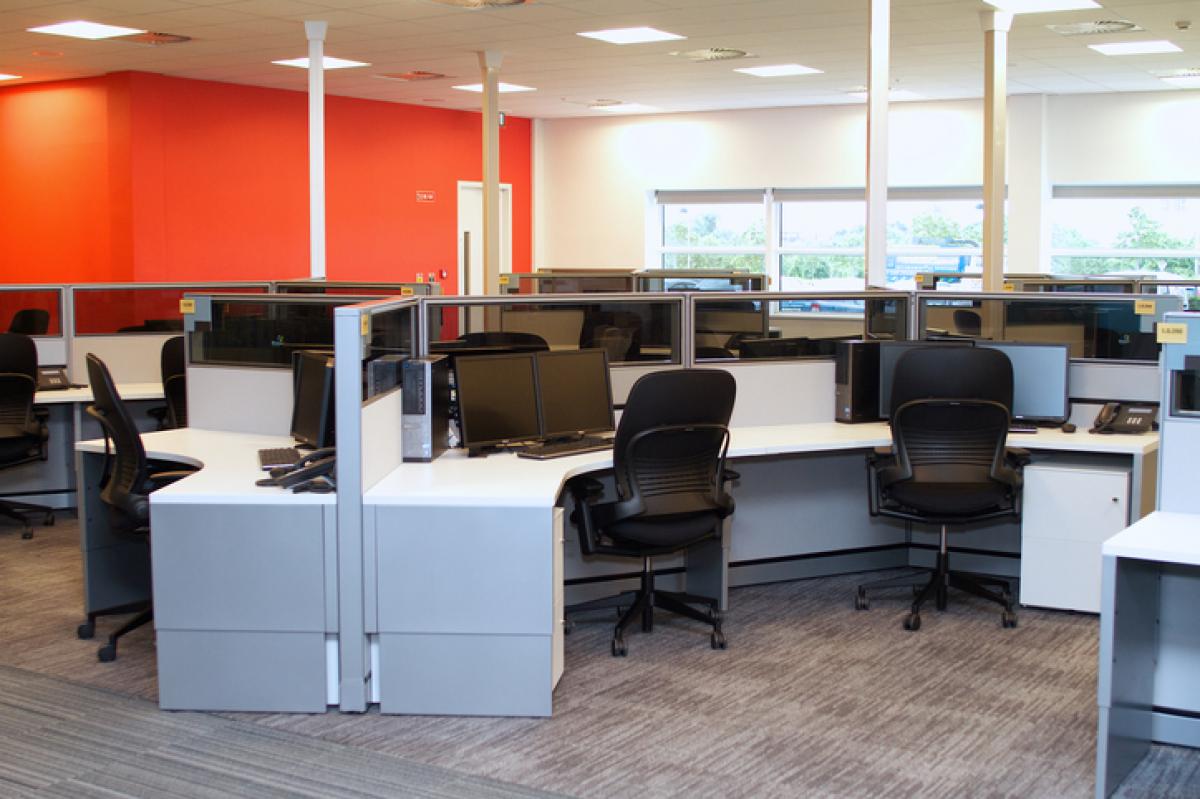HRM Five: The good and bad of office spaces
- Yamini Chinnuswamy
- Topics: Asia-Pacific, Employee Experience, Features, HRM Five

Yamini Chinnuswamy offers five important points on everything you wanted to know about HR practices today, but were too afraid to ask. Check out previous editions of HRM Five here.
Open floor office plans have been the new black, or so it has seemed over the last few years. A new survey from Robert Half has found that more than half of companies who changed their workspace in recent years did so to move to open floor plans that enhance collaboration.
But while these wide open spaces might do a better job of fostering collaboration, they may not be much better than the alternative – while also worsening productivity levels.
According to the survey, which spoke to more than 300 HR managers in the US, 65% said open floor plan offices help with collaboration, but more respondents said the same about semi-private cubicles and a combination of open and private spaces (68% and 69%) respectively.
Interestingly, only slightly fewer respondents – six out of 10 – felt that private offices could still be collaborative.
Out of more than 1,000 US employees surveyed, a similar proportion of those who work in private offices agreed that their office configurations were still conducive to collaboration (while also making them relaxed). About a third found them to be a hindrance.
Private offices also seemed to provide trade-offs in emotional and mental wellbeing of workers: those working in semi-private cubicles and open floor plans were the most stressed out (31% and 25% respectively).
“Office design should not be a one-size-fits-all approach,” says Paul McDonald, senior executive director for Robert Half. “Companies considering a change should create a layout that brings out their team’s best performance. Frequently, the optimal office setup includes a mix of private workspaces and meeting areas for collaboration.”
“It’s not practical for every employee to have a private or even semi-private office, but employers should pay attention to the overall workplace design to ensure there are both collaboration spaces and places for employees to quietly get work done. An attractive office setting could be a deciding factor for a candidate during the hiring process,” he adds.
To help HR managers figure out what’s best for their employees, here are some of the good and bad points of various office configurations.
1. Private offices
Pros: Employees and management can make business and personal phone calls, hold meetings, and have private and confidential conversations without being seen or heard by other staff members.
Cons: They’re expensive and require more space to implement. Workers who close their doors can seem unapproachable. They are not conducive to spontaneous discussion.
2. Private cubicles
Pros: They provide some of the privacy of private offices, allowing employees to make phone calls without being overheard. Likewise, employees can do their work in peace without being disturbed or distracted by the conversations of others.
Cons: Like private offices, private cubicles close people off. They do not encourage collaboration and spontaneous discussion.
3. Semi-private cubicles
Pros: Colleagues can see each other and know who is available for meetings. It’s easier to strike up conversation or discussion about work. It offers the open feel of open floor plans while still giving workers their own demarcated space to have ownership over.
Cons: Impromptu conversations and phone calls by employees can be disruptive to nearby workers trying to focus. The conversations might not always been work related, workers can end up gossiping for too long about non-work related topics.
4. Open floor plan
Pros: This option saves on overhead costs, and is best for roles, departments or industries that require a high level of collaboration. It is also easier to add hot-desking areas or standing-desk stations in an open floor plan.
Cons: As above with semi-private cubicles, these layouts can be highly disruptive to an employee’s productivity. It might be great for extroverts, but it is not ideal for introverted personalities or those who require a quiet space for concentration. It also lacks private spaces for confidential discussions.
5. Combination of private and open spaces
Pros: It provides the best of both worlds: spaces that conducive to collaboration, but also spaces where employees can go to knuckle down and get work done if they feel the main working areas are too noisy and distracting.
Cons: It’s more expensive to implement and more time might be needed to design this type of space.
—
As it happens, HRM Asia is seeking out Asia’s most effective office – let us know if you have any suggestions for contenders!






